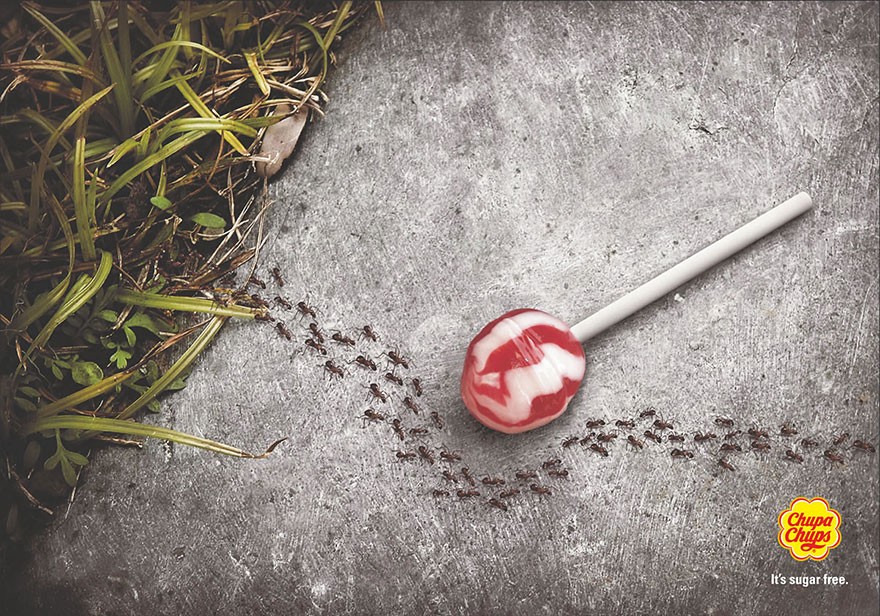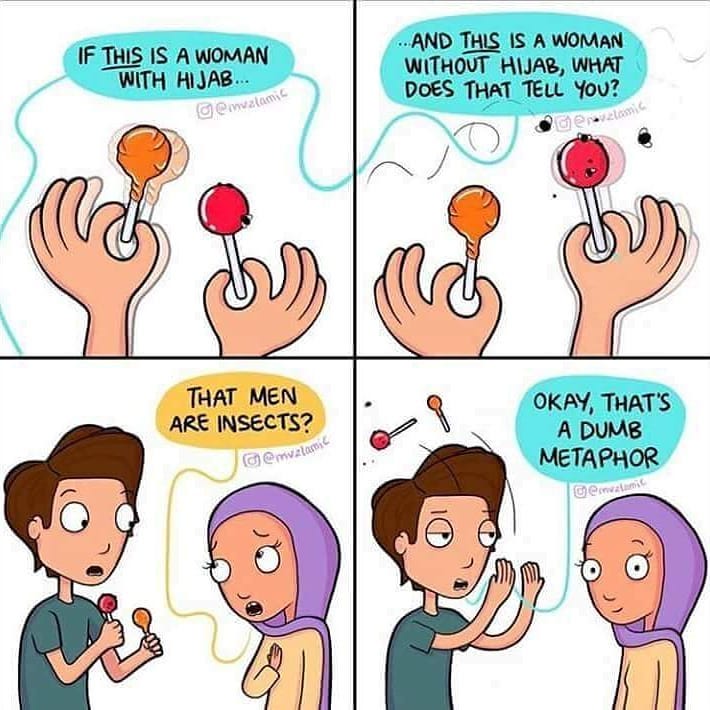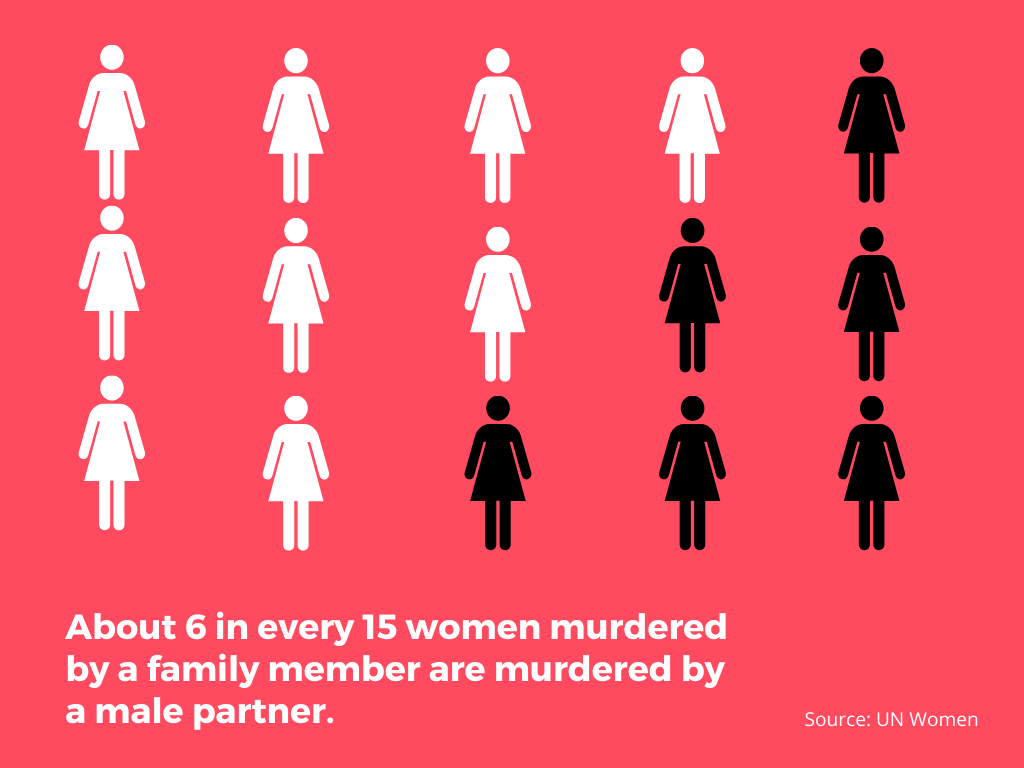Debunking #NotAllMen and Understanding Allyship Better
TW: This article mentions themes of harassment and the occurrence of sexual assault and abuse.
We acknowledge that gender-based discrimination and violence can occur against all genders. However, this article will be focusing on gender-based discrimination and violence carried out against women.
A couple of weeks ago, a class discussion on advertisement analysis for our freshman ‘Media and Society’ course turned into a controversial debate when feminism came up. We were analyzing a sugar-free advertisement for Chupa Chups lollipops which showed ants encircling around an unwrapped lollipop. This stimulated a heated response in class regarding the common use of insects and lollipops as a metaphor to gaslight survivors of assault. The metaphor likens women to lollipops and men to insects, claiming that lollipops invite insects unless properly wrapped. The appropriate wrapping varies according to cultural norms, religious affiliations, and the prevalence of patriarchy, but the metaphor is universal.
During the discussion, someone mentioned that the only good thing about the advertisement was that men were being likened to insects. This comment offended many boys in our class, and understandably so. It is an absurd analogy that is dehumanizing for both men and women.
Of course, men aren’t ants, but neither are women lollipops.

Although the class debate ended when our professor concluded how advertisements are subjective to different cultures and mindsets, the incident was later actively discussed by our batch. The narrative soon shifted from ‘men being called insects’ to ‘all men being labeled as insects,’ which many boys in our class refuted with a phrase we often hear: not all men.

The hashtag #NotAllMen started as a rebuttal to the generalization of men as sex offenders. Now, it’s been reclaimed by feminists as an Internet meme [as pictured above]. Additionally, it has also initiated a counter-rebuttal manifested in the hashtag #YesAllWomen. The hashtag is used by women to share their frequent experiences of harassment, discrimination and sexual violence.
However, despite the popularity of these expressions on Twitter and the recent discourse on these issues, most people—men and women included—are still unable to understand the essence of this conversation. . Perhaps this is because any type of feminist discourse is considered synonymous to man-hating.
Debunking Not All Men
When most people use this phrase, they likely refer to the many good and kind men they know, like the good men we know. However, most men do not understand that when feminists oppose the hashtag #NotAllMen, they are not labeling all men as harassers. This phrase is not a code for ‘put all men in one box and ruin their prospects of success and social stability.’ It is a sigh of agony that pleads for society to affirm women’s human dignity.
We know that not all men are sexist. We know that not all men are sexual offenders. But we also understand that all women have experienced sexism and misogyny in some form, whether at home, at work, in school, on the streets, or in the marketplace.
Additionally, all men do benefit from patriarchy and misogyny in some way because both are deeply rooted in most modern institutions. For example, men are more likely to be recruited for jobs, whereas women with the same credentials are 30 percent less likely to be called in for a job interview. Men are paid more than women for the same amount of work. In the U.S., based on average median earning data from 2019, women of all races earn 82 cents for every dollar that a man earns. This gap is even greater for women of color. .. While this wage gap seems trivial, over a 40-year career, this causes women a loss of $407,760 that they could have made if they were men. That is enough money to buy a life insurance policy! Most significantly, men are less likely to be sexually exploited at work, while almost three-quarters of women face workplace harassment from a higher-up. Worse still, nearly 75 percent of cases of workplace harassment go unreported.
Patriarchy also facilitates gender-based microaggressions against women. These microaggressions are so normalized in our society that most men do not even necessarily have to have ill intentions when they engage in them. Why is it that when a girl excitedly announces her favorite football team or music band, many (especially men) subconsciously jump to test her knowledge about the team’s history and the band’s records, but are unbothered when a boy does the same? Why is it that girls appear “bossy” and “loud” to us when they are just knowledgeable and passionate about a certain subject? These patterns of behavior reinforce sexist stereotypes that confine women to a specific, weaker role in society.
Most women have internalized these microaggressions on a physical and psychological level. These microaggressions may include men talking over women, men implicitly demanding women for their credentials and knowledge regarding day-to-day things, men raising their voice in arguments to intimidate women, an official paying more heed to a man’s opinion over a woman’s opinion in a meeting, and so on. This is also why when a female student explains something in class, she is likely to start off with “I am not an expert in this but…” and conclude with “does that make sense?”
All men may not be directly responsible for this, but patriarchy, a system that gives them privilege at the expense of women, is. And most men do knowingly or unknowingly uphold patriarchy. Indeed, one of the ways that they do so is by advocating for Not All Men.
The use of this phrase is a blatant refusal to recognize that abuse and violence against a huge fraction of women (one in three women globally) are predominantly carried out by men. Moreover, responding with this phrase when women bring up gender-based discrimination or worse, as they narrate traumatic experiences of harassment or sexual assault, derails the conversation that took decades of effort to start. It brings us back to square one—not to mention that it makes you seem apathetic.
Why is it that men never respond with this phrase when someone comments that ALL men are better drivers than women? (While you’re at it, look through these statistics which prove that this assumption is incorrect.) Or the idea that all men are more professional than women at work? (After all, the statistics regarding workplace harassment indicate otherwise!)
From a Bird’s Eye Perspective
Let’s play a game where we tell you deeply concerning facts, and you just let them sink in.
Every day, 137 women are murdered by a family member. A male partner commits 38 percent of those murders. Globally, one in three women has been subjected to intimate partner violence or sexual violence committed by a non-partner (not including sexual harassment).

Fifteen million adolescent girls worldwide, between the ages of 15 and 19, have experienced forced sex. As many as 150 million girls worldwide are raped or subjected to sexual violence each year, usually by someone in their family circle. Each year, 15 million girls are married before the age of 18—that is 28 girls every minute. Seventy-two percent of victims of human trafficking are women.
Eighty-two percent of female parliamentarians have experienced some form of psychological violence while serving term: nearly half reported receiving death, assault, rape, and abduction threats. Sixty-five percent had heard sexist remarks, primarily by male colleagues in parliament.
Phew…
These figures aren’t exactly accurate, though, because a considerable fraction of women are unable to report sexual violence to the authorities due to many complicated reasons. These include inadequate support systems, shame, fear or risk of retaliation, fear or threat of victim-blaming, fear or risk of not being believed, fear or risk of being mistreated and/or socially ostracized, etc. Do you still think men are the real victims here because not all men are responsible for this?
Additionally, as a rebuttal to the Me Too and the Times Up movements, men often argue that a huge fraction of reports against assault and harassment are false. Actually, that’s not true; the number of false reports is vastly overestimated. By putting this argument forward, they also infer that all allegations could lack credibility.
One commonly cited figure holds that 5 percent of rape allegations are found to be false; however, the actual number is even less. The subject of the aforementioned stats are mostly college students, out of whom, around 95 percent do not report the crime to the police. In fact, only about 8 to 10 percent of women are believed to report such crimes. This means that most cases of assault and harassment simply go unreported. This also means that the 5 percent figure only applies to up to 10 percent of all rapes that occur, which brings the actual percentage of false cases to just 0.5 percent. Men are actually 230 times more likely to be sexually assaulted than falsely accused of assault.
Moreover, allegations are considered false even when a woman drops her case and/or recants her story. Dropping or recanting the claim doesn’t necessarily mean the woman is a liar. There could be several reasons why she chose to do so, including social pressure, blackmail, coercion, revenge porn, aggravated harassment, lack of resources to pursue the case and or receiving a settlement outside of court.
For example, in 2019, Shruti Chaturvedi from Goa was driven to withdraw a harassment case she had registered against a vendor in Gujarat, India, after six years of attending hearings in court with no justice in sight. Similarly, in 2020, a day after a case of harassment was registered against a politician in Chennai the complainant approached the police to withdraw the complaint since the accused had apparently apologized to the woman. This underscores the prevalence of misinformation regarding women’s issues and the degree to which irrelevant counterarguments are put forth to derail significant conversations intended for women’s emancipation and safety.
A Woman’s Perspective
Every day, women struggle to stay safe while trying to lead a normal life, achieve goals, and meet society’s standards. For example, while on our way to work, school, and university, we feel the need to use a long list of safety measures. We use navigating applications to ensure a parent, or a friend can come to our rescue if we fall prey to street harassment, abduction, and even sex trafficking.
Even as we go for a casual walk around the street, we carry pepper sprays and pocketknives in our hands, frightened yet prepared in case we encounter harassment. We try not to go out past sunset and instead choose crowded paths. However, none of these measures guarantee our safety.
The problem is not how calculated we are with our practical lives. The problem is that nobody addresses the real issue.
Despite our efforts, devastating news about innocent women such as Sarah Everard, who are abducted and killed while walking home, flood our social media. Though only a small percentage of cases involving violence against women go to court, and even less result in the survivor getting justice, the number of restrictions placed upon us girls increase—and understandably so. After all, society will never hold predatory men accountable or, as we are often told, “men will be men.” So, then what happened to “Not All Men?”
We have tried abiding by society’s preventive measures. We have ensured our doors are locked when left home alone. But then news such as that of unidentified assailants in India raping an 80-year-old woman in her own house and a burglar in England breaking into a 25-year-old woman’s house circulate online and boom through the televisions in our homes. This builds up our frustration and fury as we realize no amount of safety precautions can protect us. Can you blame us for getting angry at the unidentifiable sexual predators that are out enjoying the luxuries of their life indifferently, knowing that patriarchy will protect them?
Of course, it’s not just unidentified assailants and intruders who can attack you in the safety of your homes. Most often, sexual predators come from your own home. One heart-wrenching example is that of the three-year-old girl in India whose uncle raped her and the six-year-old girl in Decatur, Georgia, who was raped by her half-brother while her parents slept in the same room.
We do believe that not all men are like this. But how do we explain that to the 16 year old from Jordan who was raped by her father 300 times? How do we explain this to all the women mentioned in this article and the one in three women globally who have experienced physical or sexual violence?
Due to the prevalence of these crimes and the general condescending treatment women receive from men, it becomes difficult to tell the difference between a good man and a bad man. Outwardly, they all look alike; they may seem kind and caring, but given the vast number of cases like the ones we have mentioned above, how can we be expected to blindly trust the men we meet? Living in an environment where most of our energy is drained in protecting our bodies against assault, where the evil eye of sexualization persistently follows us around, makes us distrustful of ALL men automatically.
Men as Allies
If you are a man and have not committed any of the heinous crimes mentioned above, this discussion shouldn’t offend you or put you on edge. Instead of searching for praise or validation for not being rapists (a low bar, in the first place), be an ally! Help amplify women’s voices, examine your behavior for the existence of microaggressions, don’t be complicit by passively listening to or engaging in locker-room talk, and ensure this conversation does not get drowned out by insecure men.
The phrase, not all men is not helping anyone. It isn’t adding to the debate, only derailing the conversation and dismissing the lived trauma of most women. We understand that those who jump to remind us “not all men are like that” usually just mean, “I’m not like that” and we believe you! So then let’s work together to ensure we live in a safer and more just society? Start by acknowledging the privilege that patriarchy grants you.
Secondly, when someone with any degree of assault trauma vents their frustration regarding misogyny, do not behave apathetically, retaliate, or get mad at them for “generalizing or attacking” you. They are not attacking you. Their fight is against misogyny, not men. Similarly, do not trivialize their anger or consider their fury nonsensical; trauma affects different people in different ways. Instead, hear them out.
Then, acknowledge and validate survivors’ lived experiences. Extend your support by simply not denying their experience. They don’t need your validation but having people believe and support them makes their journey less painful and their battle easier to fight. In a world where women’s experiences with sexual violence are so often discredited, your validation will count! But remember, that is still the bare minimum.
Lastly, be more sensitive. Making jokes about assault is counterproductive. It desensitizes people and trivializes sexual violence, making it harder to counter an issue that is already ignored regularly. Instead, try not to take part in those conversations and stop your friends when they make jokes about other people’s suffering. Rape jokes are not funny, and they don’t benefit anyone. If jokes that reduce sexual violence to a laughing matter release endorphins in your system, that is a cause for concern in and of itself.
Society uses the passive voice to address incidents of gender-based violence. We will always see news headlines state, “woman was raped,” or “woman was abducted,” never “man raped woman,” or “man abducted woman,” and that is part of the problem. This repetitive victimization of women as a disguise against men as perpetrators has desensitized people. This is why when we hear news of women being wronged, we barely feel a thing, but whenever someone utters something slightly along the lines of ‘all men,’ all eyes in the room shift towards that one person. This isn’t a battle between the sexes. This is a battle against misogyny which has made men more privileged and secure than women.
It is crucial for men to stop allowing a simple statement to hurt them because it isn’t meant to hurt them. It is meant to help heal those who are oppressed around them. And more than that, it is meant to garner attention to instances of violence, abuse and discrimination carried out by men against women. Your complaints derail these important conversations. So, next time when you think about jumping into a conversation with “not all men,” be more mindful of what the impact of your words could be, and perhaps decide against saying it at all.












